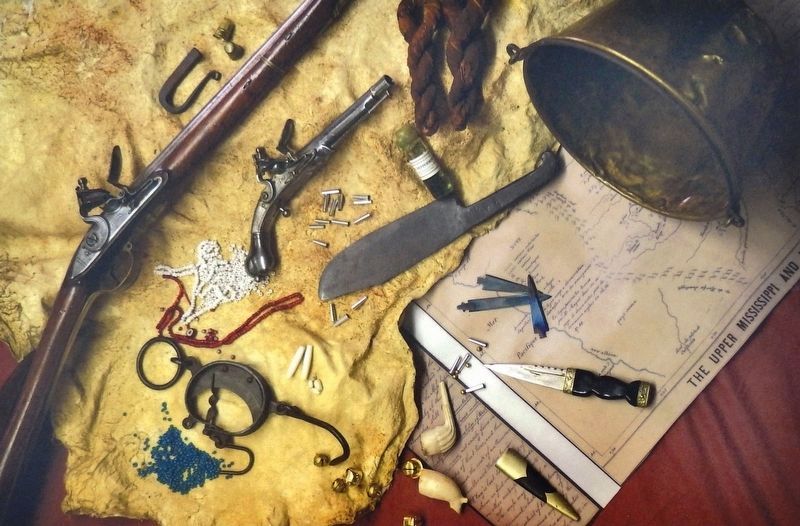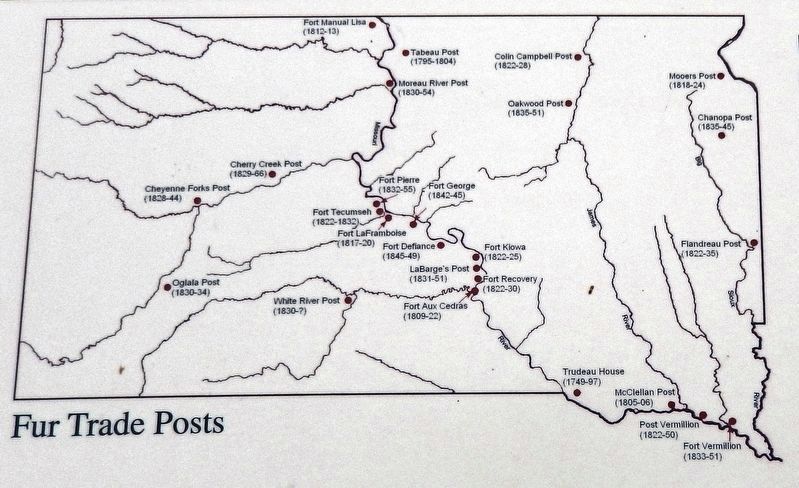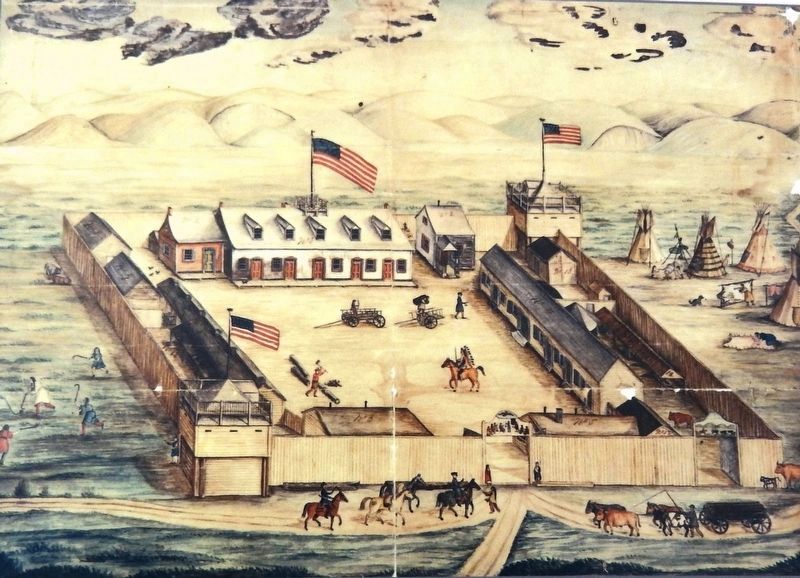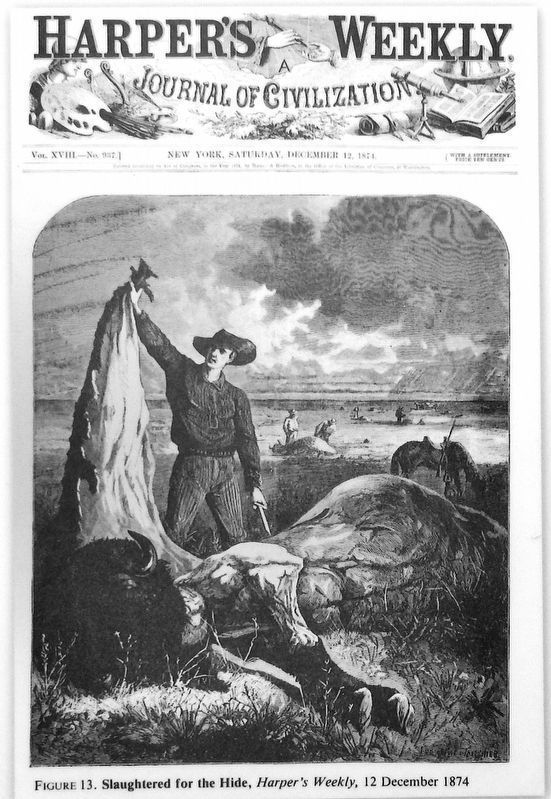Fort Pierre in Stanley County, South Dakota — The American Midwest (Upper Plains)
Fur Trade on the Upper Missouri River
Larger fur trading forts operated year-round, serving as regional centers for a network of smaller, seasonal "posts" near American Indian encampments. Forts provided food and other supplies to the outlying posts and held their furs for shipment. Forts not only served as trading posts, but also as the place to come for news and fellowship.
Images courtesy of the South Dakota Historical Society and the National Archives.
Erected by The South Dakota State Historical Society, a Preserve America grant and the Dakota, Minnesota and Eastern Railroad Corporation.
Topics. This historical marker is listed in these topic lists: Forts and Castles • Industry & Commerce • Native Americans.
Location. 44° 23.393′ N, 100° 23.331′ W. Marker is in Fort Pierre, South Dakota, in Stanley County. Marker can be reached from Fort Chouteau Road, 0.3 miles east of State Highway 1806. Marker is located on the grounds of the Fort Pierre Chouteau National Historic Landmark, on the south side of the walking trail from Fort Chouteau Road. Touch for map. Marker is at or near this postal address: 350 Fort Chouteau Road, Fort Pierre SD 57532, United States of America. Touch for directions.
Other nearby markers. At least 8 other markers are within walking distance of this marker. Scotty Philip and his Buffalo Ranch (within shouting distance of this marker); Rivers and Trails (within shouting distance of this marker); Fort Pierre Chouteau and the "Yellow Stone" (within shouting distance of this marker); Fort Pierre Chouteau: Fur Trade (1832-1855) (within shouting distance of this marker); Fort Pierre Chouteau (within shouting distance of this marker); Cultures Come Together (about 300 feet away, measured in a direct line); Fort Pierre Chouteau Site (about 500 feet away); Archaeology at Fort Pierre Chouteau (about 500 feet away). Touch for a list and map of all markers in Fort Pierre.
More about this marker. Marker is a large composite plaque, mounted horizontally on waist-high metal posts.
Related markers. Click here for a list of markers that are related to this marker. Fort Pierre Chouteau National Historic Landmark
Also see . . . The Upper Missouri River Basin in the Nineteenth Century: Fur Trade. Fur trade companies were large and profitable enterprises in turn of the 19th century North America. The British Hudson’s Bay Company and North West Company dominated the North American fur trade in the second half of the eighteenth century, but after the US’ independence, American fur traders began to seriously compete. John Jacob Astor’s “American Fur Company” soon became the dominant fur trade outfit within the US, as well as one of the US’ largest and wealthiest companies overall. Other companies followed, building many trade posts/forts along the river. These fur traders operated from their forts, trading with Native people who did the trapping. Fur traders would also directly employ a small number of trappers or hunters. (Submitted on October 10, 2018, by Cosmos Mariner of Cape Canaveral, Florida.)

4. Marker detail: Buffalo robes or other furs made a fair trade for manufactured goods
From top (left to right): strike-a-light, thimbles, flintlock rifle, flintlock pistol, tinklers (small metal items), metal knife, bottle of peppermint, tobacco twists, brass trade pot. From lower left: glass trade beads, a hide scale, hair pipes (long white tubes), hawk bells, white ball clay pipes, sgian dubh (knife and sheath pronounced skin doo), and metal points.
Credits. This page was last revised on October 10, 2018. It was originally submitted on October 6, 2018, by Cosmos Mariner of Cape Canaveral, Florida. This page has been viewed 491 times since then and 45 times this year. Photos: 1, 2, 3. submitted on October 9, 2018, by Cosmos Mariner of Cape Canaveral, Florida. 4, 5. submitted on October 10, 2018, by Cosmos Mariner of Cape Canaveral, Florida. 6. submitted on October 9, 2018, by Cosmos Mariner of Cape Canaveral, Florida. • Andrew Ruppenstein was the editor who published this page.




